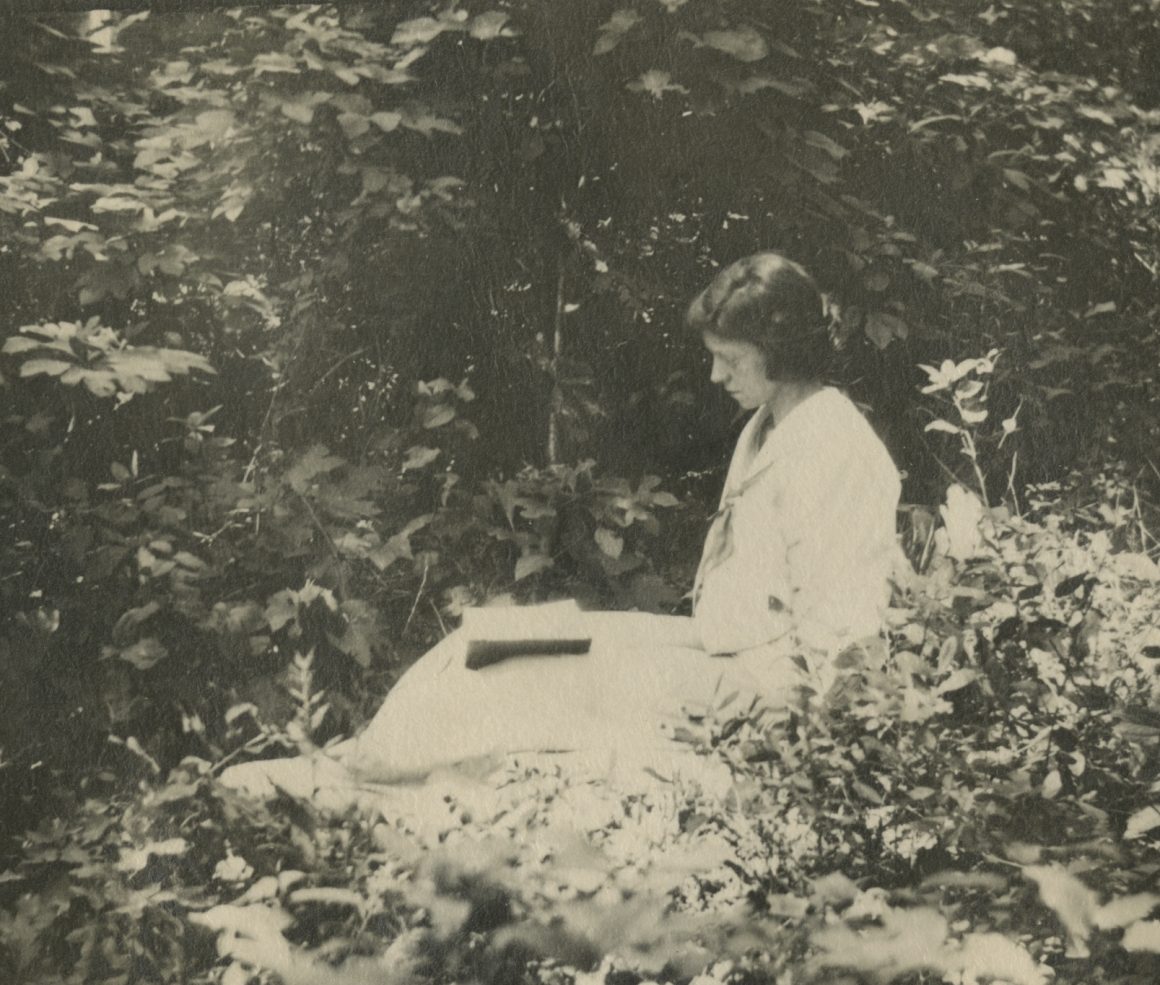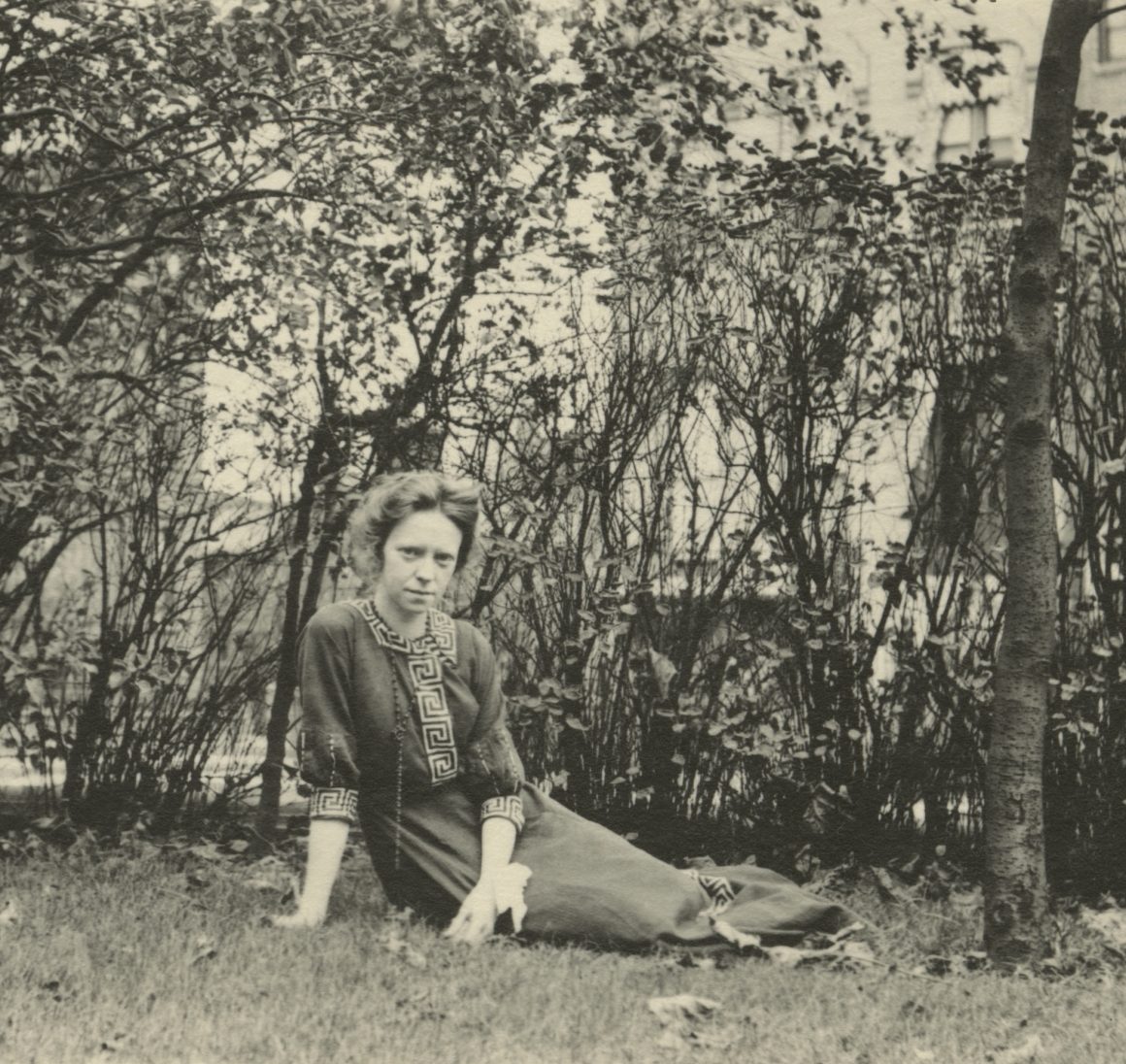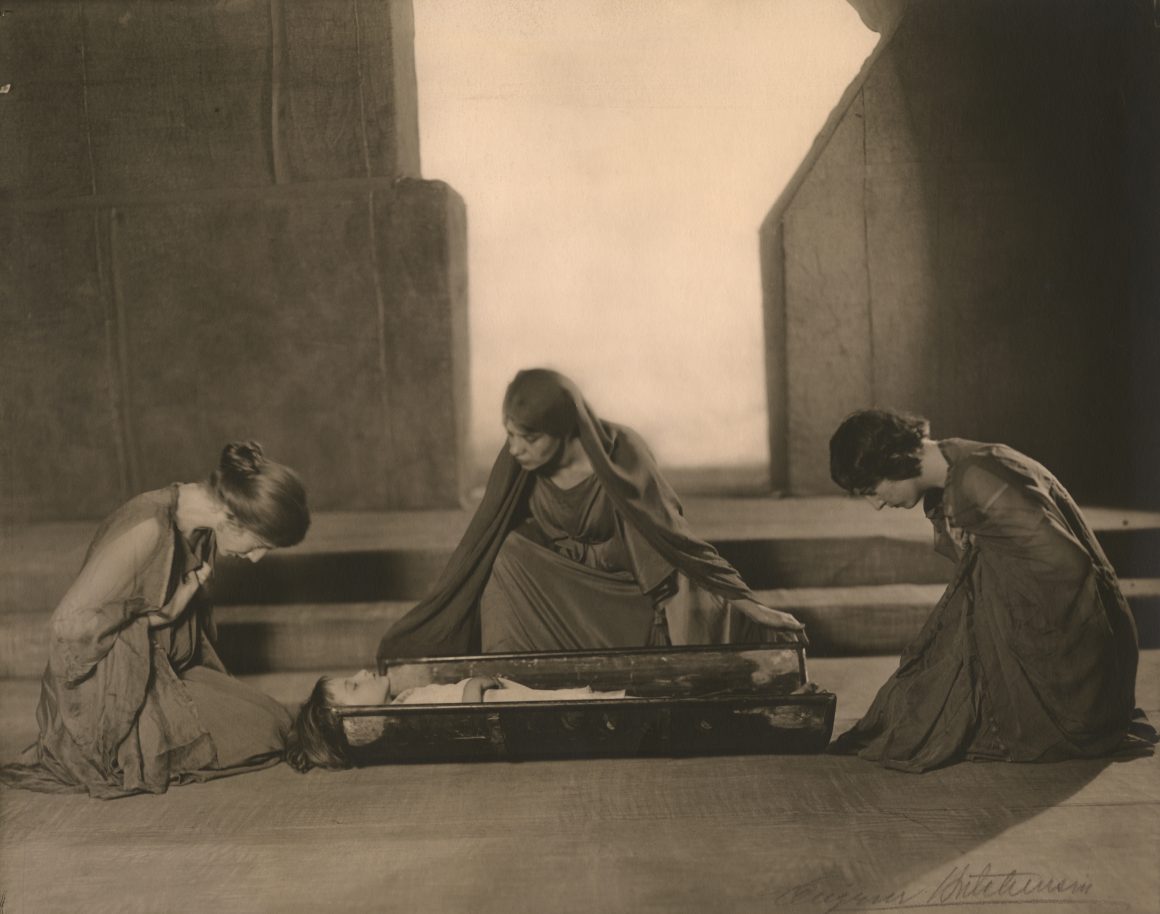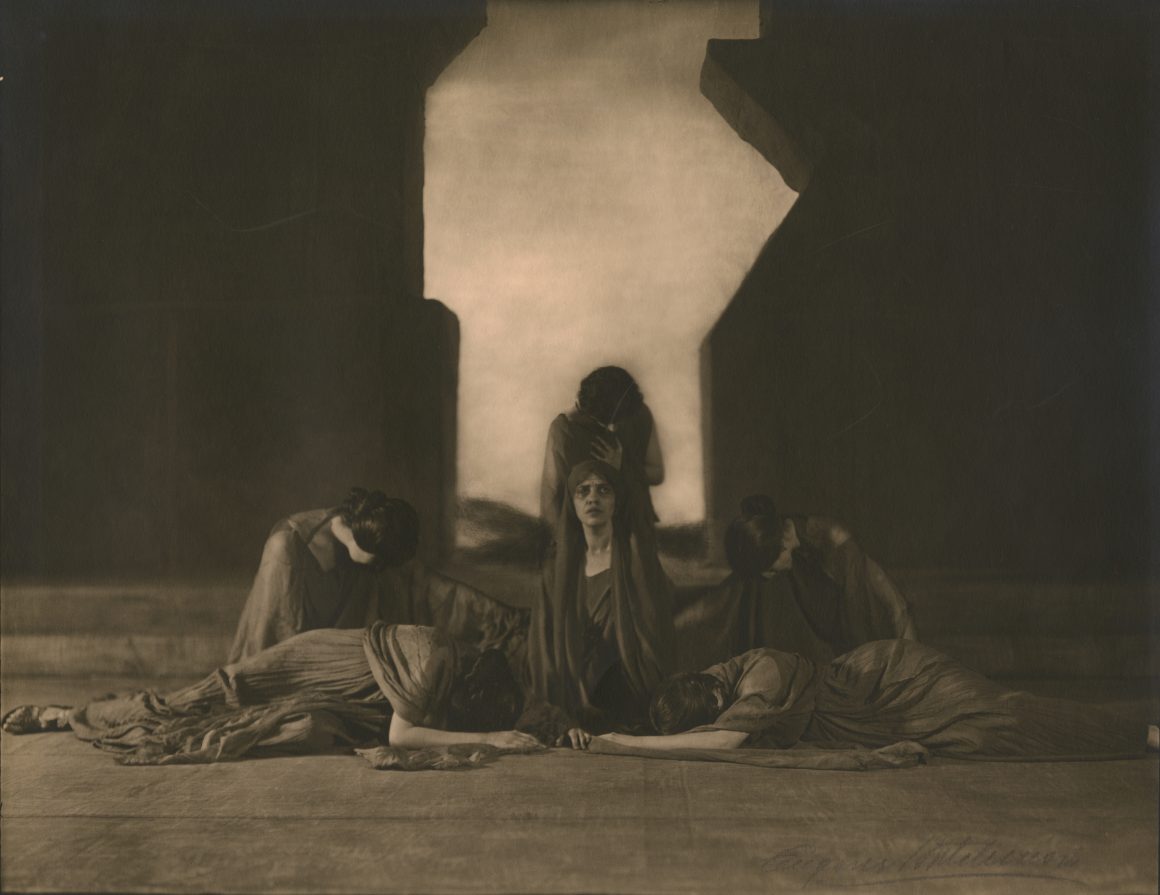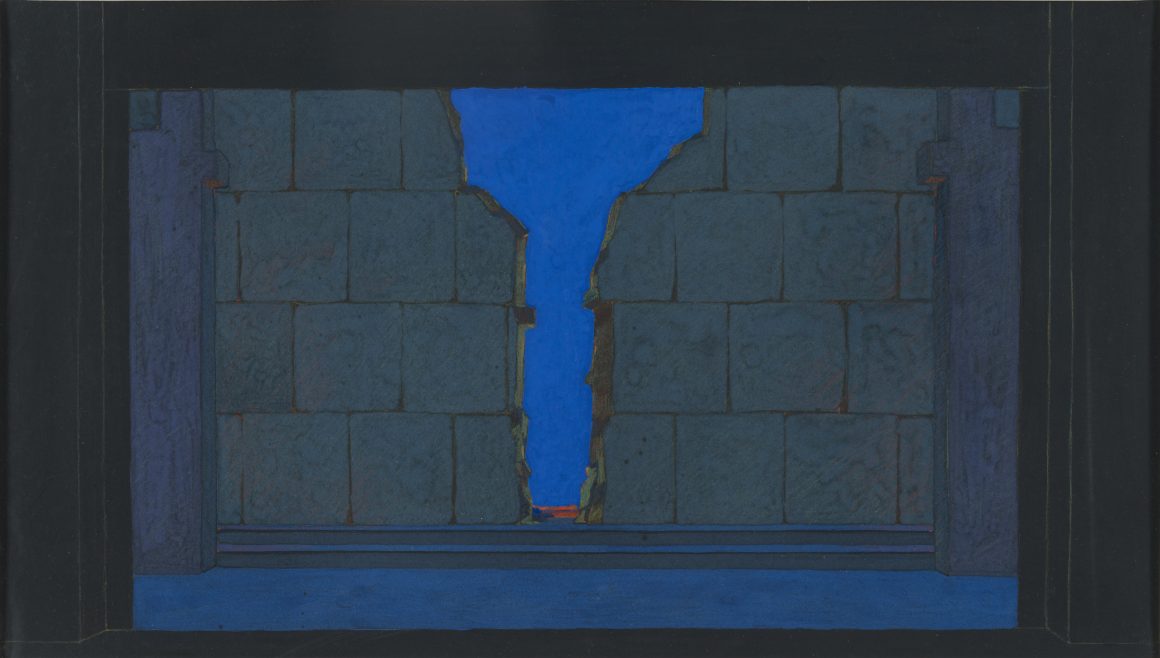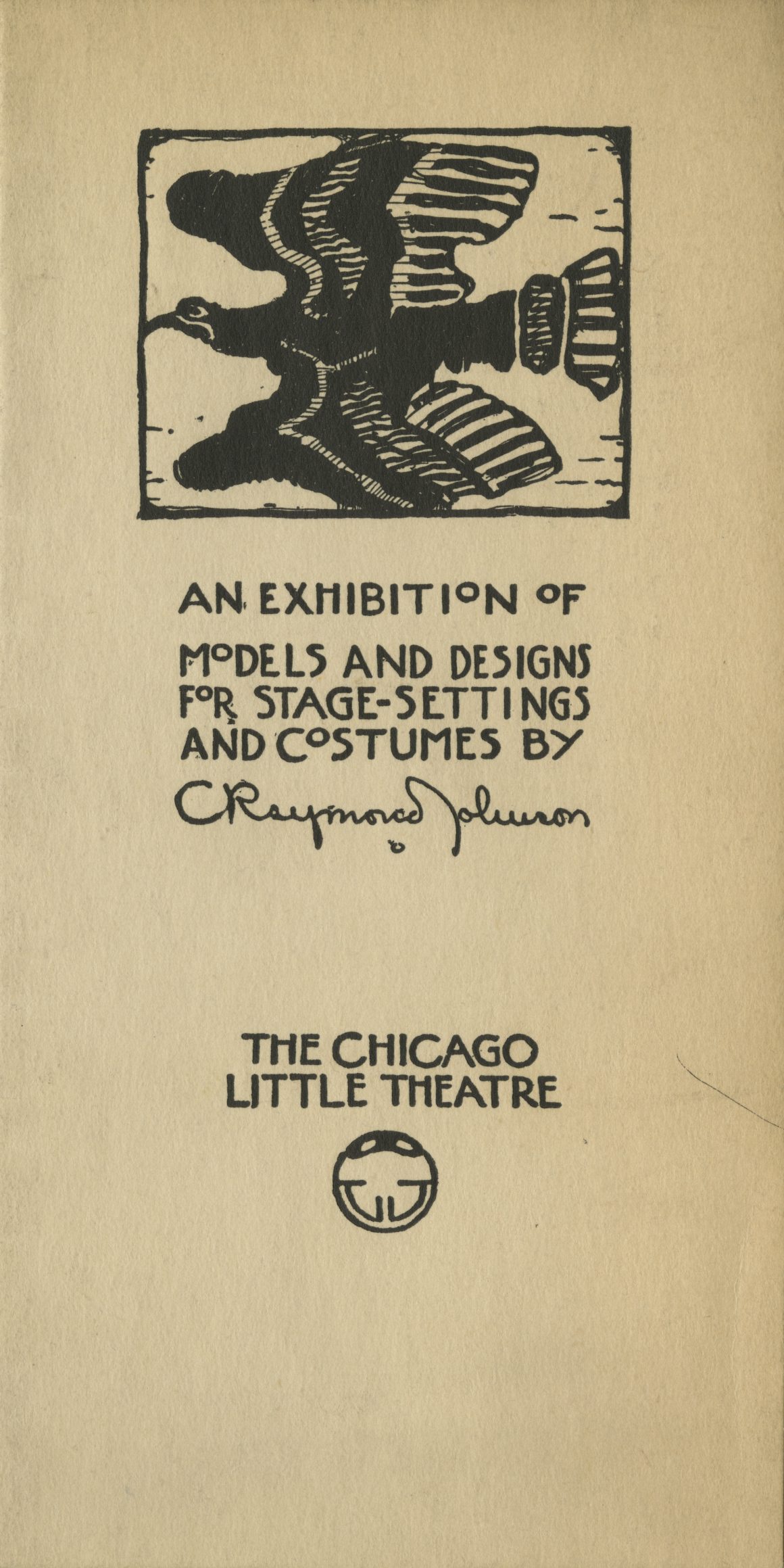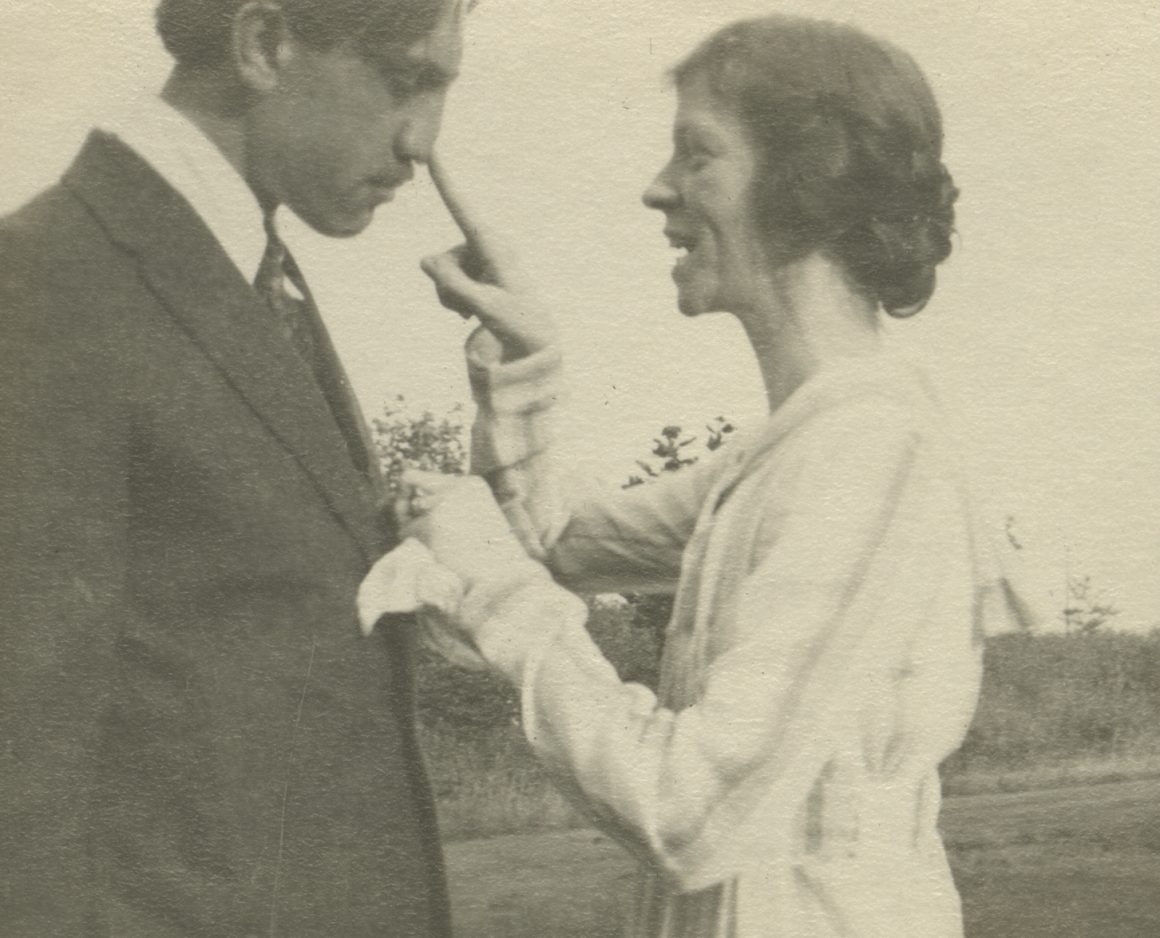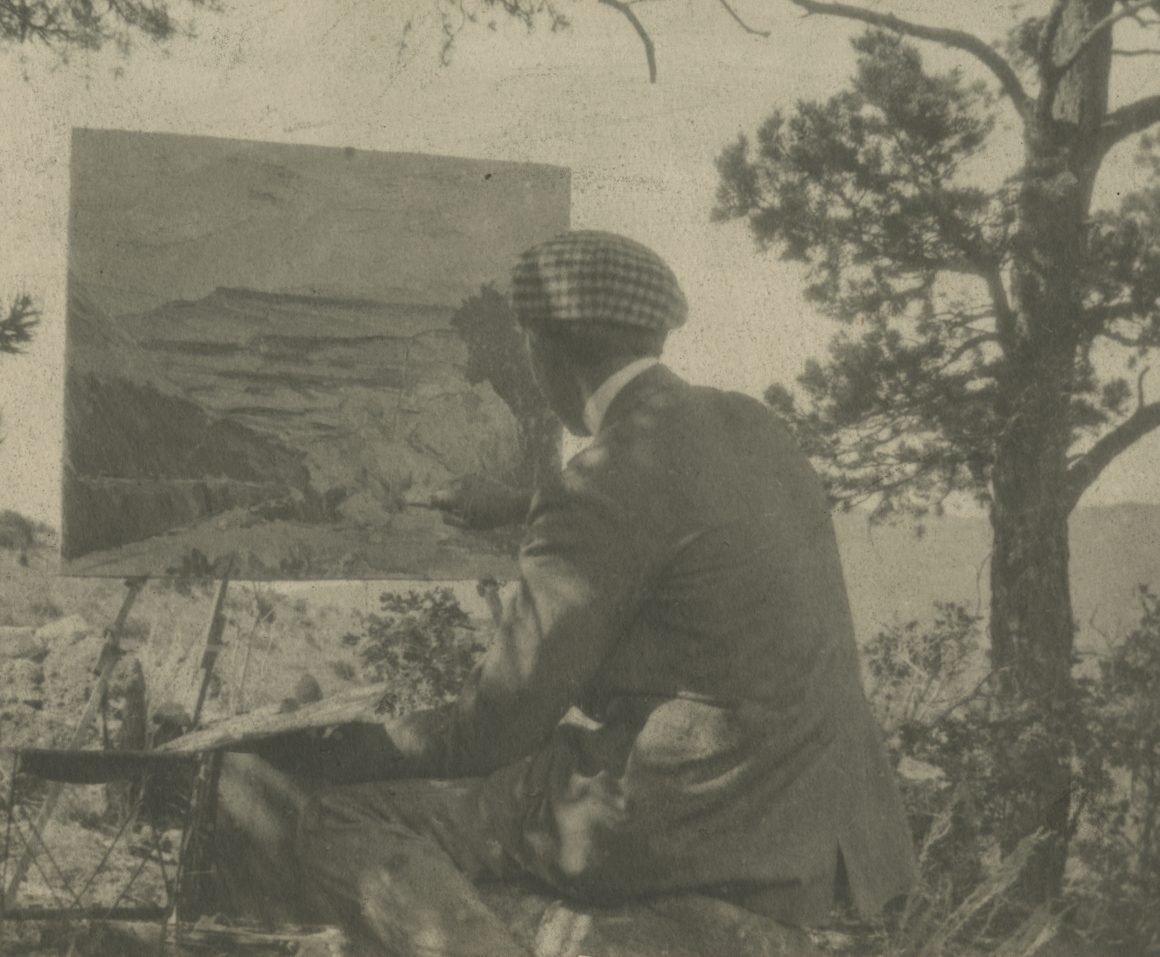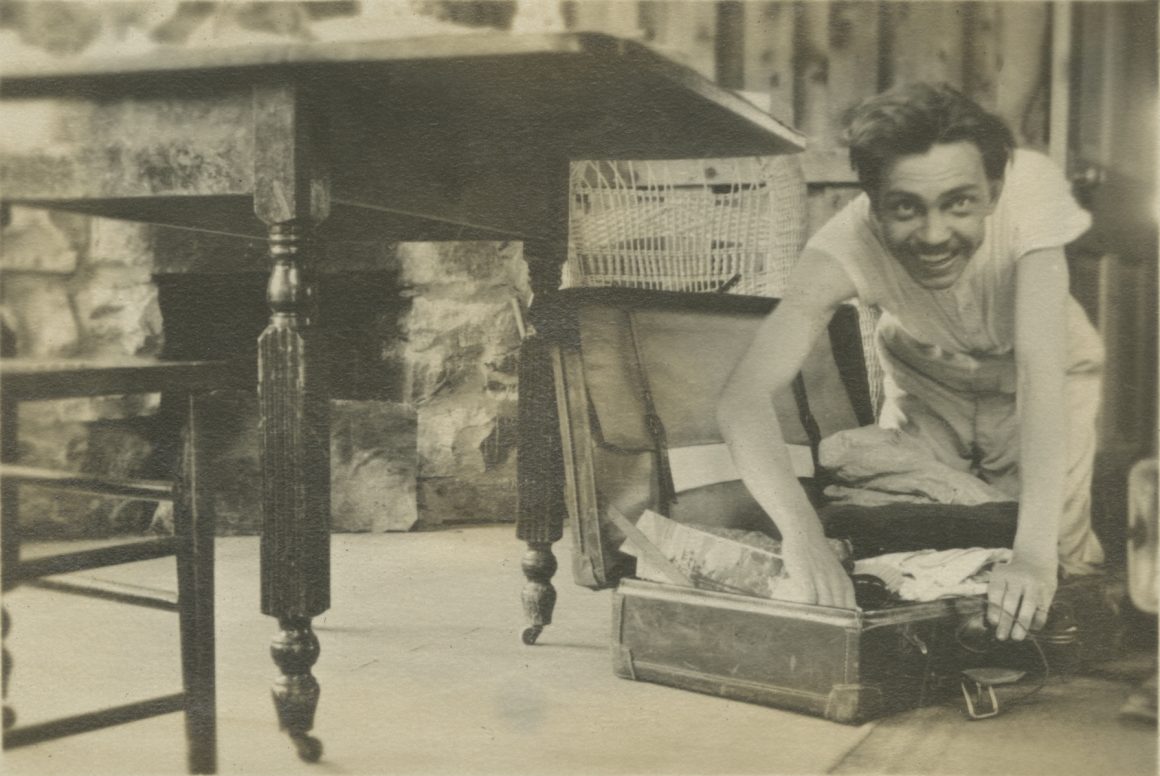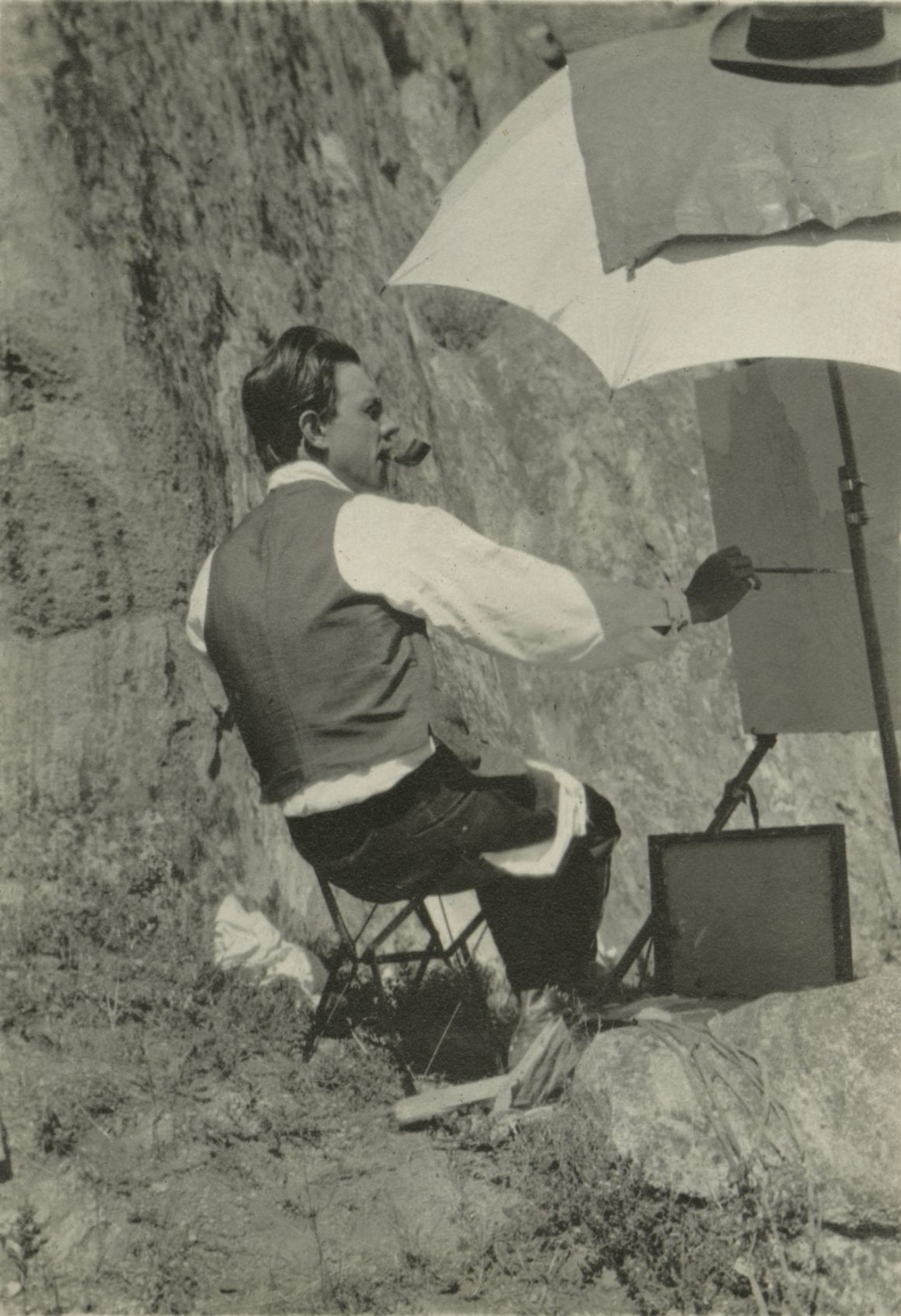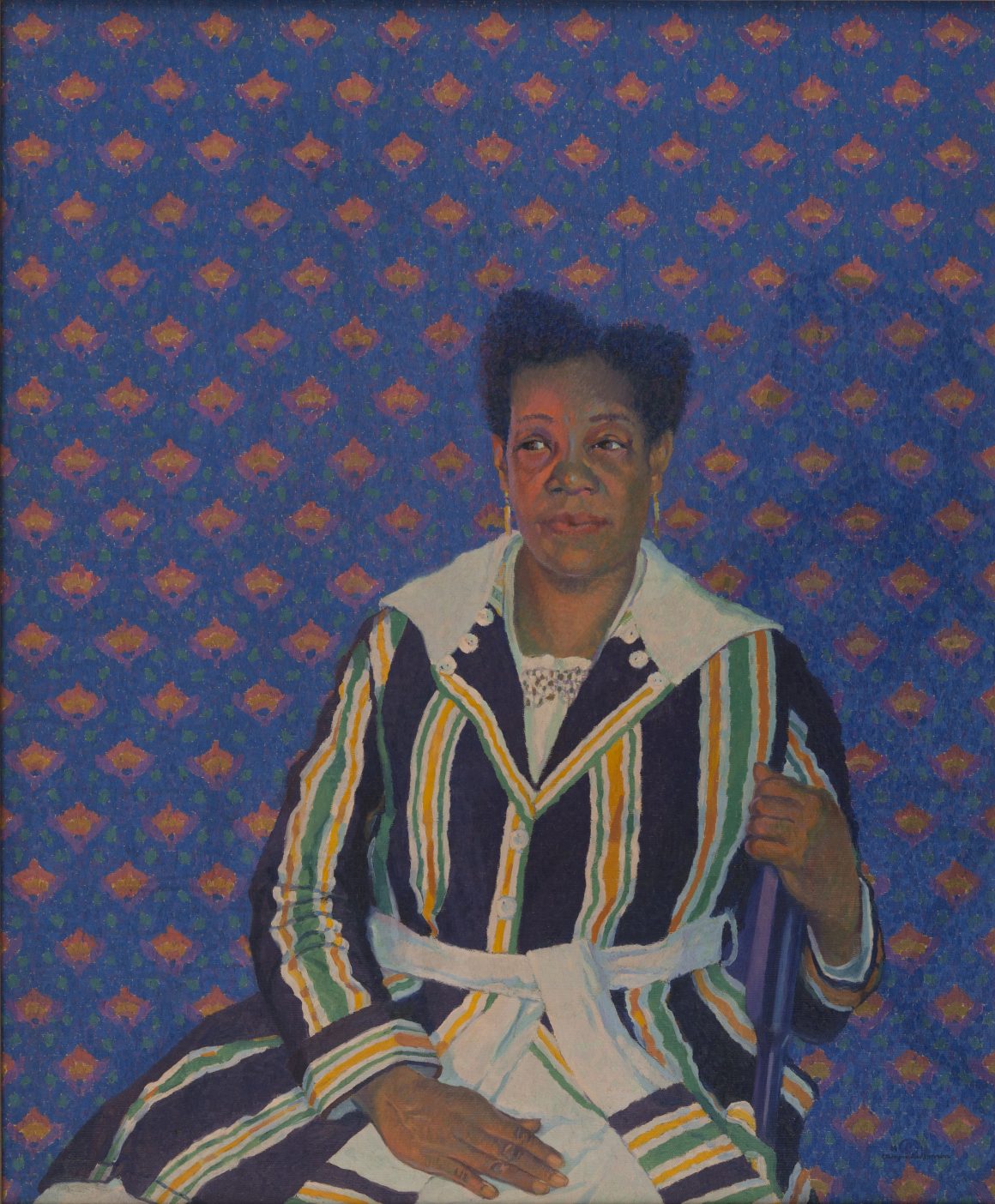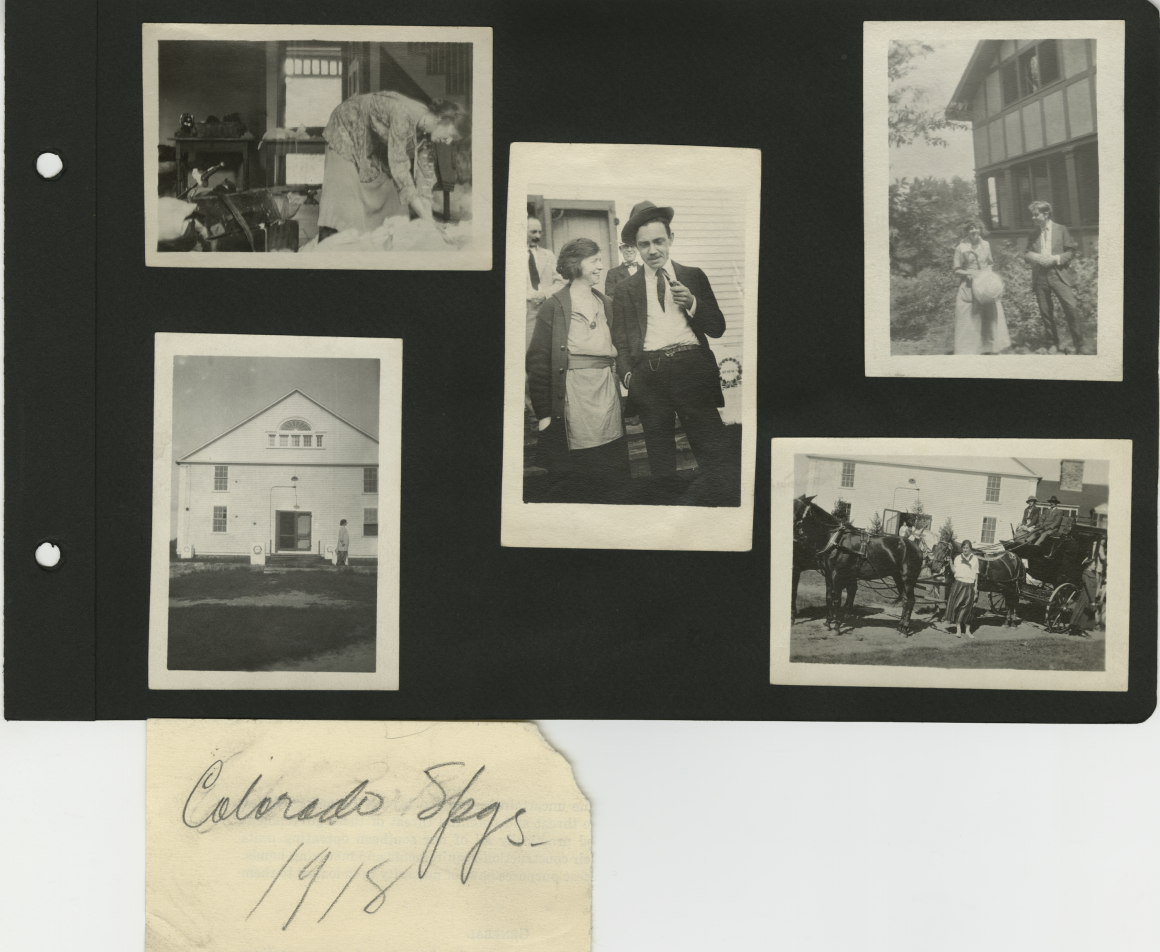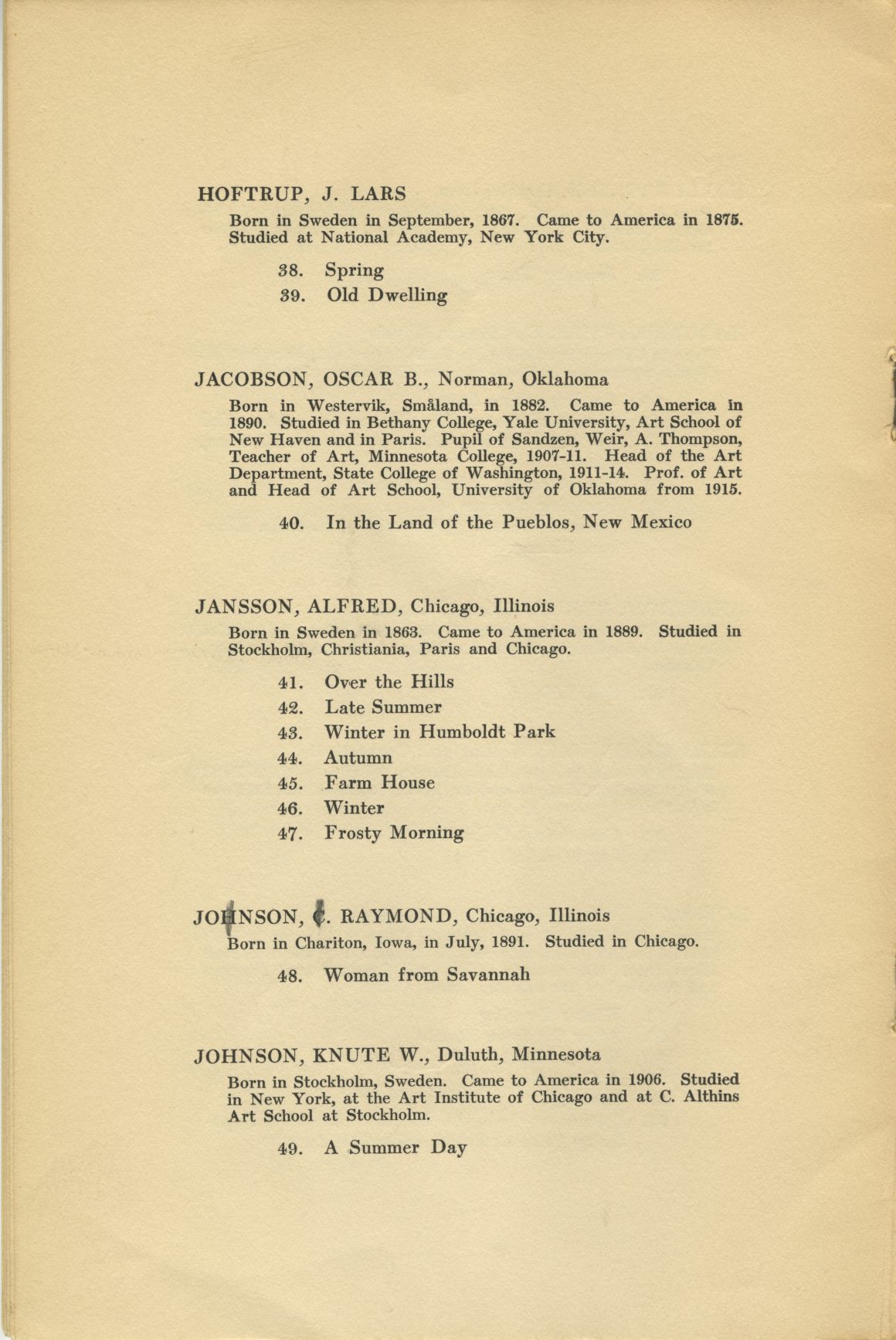Chicago, 1910–1921
Introduction
Raymond Jonson arrived in Chicago in 1910 at the age of nineteen to continue his art education at the Chicago Academy of Fine Arts, and later the Art Institute of Chicago. He soon began to sell paintings and teach his own classes, as well as meeting other artists such as B.J.O. Nordfeldt who would be an important influence on his career. Jonson was also influenced by exhibitions at the Art Institute of Chicago and the 1913 Armory Show, along with the burgeoning modern architecture, urban aesthetics, and vibrant energy of the city. His paintings from this period included a number of portraits, landscapes, and architectural studies, and he also continued to develop his technique through figure studies and drawings.
In 1913, Jonson was hired as a stage designer and illustrator for the Chicago Little Theatre, where he developed a sense of composition, dramatic lighting, and design that would inform his evolving painting style. He also met and married Little Theatre secretary Vera White in 1916.
During the summers of 1919 and 1920, Jonson was invited to paint at the MacDowell Colony in New Hampshire, where he further developed his unique style of landscape painting. From 1918 to 1923, he kept a diary chronicling his artistic experiences in Chicago, the MacDowell Colony, and painting trips out West. This particularly compelling archival resource is available to researchers in digital form below.
Timeline
In August or September 1910, Jonson moves to Chicago to study illustration at the Chicago Academy of Fine Arts. Settling into life in the city, he meets friends of his parents and takes odd jobs to support himself.
In 1911 Jonson sees his first major traveling exhibition at the Art Institute of Chicago, paintings by Joaquin Sorolla y Bastida. The traveling exhibitions and permanent collection at the institute become a major influence on his development, and Jonson decides to pursue a fine art career as opposed to commercial illustration.
In May 1912, Jonson rents a studio and apartment near Jackson Park with fellow students J. Blanding Sloan and Carl Oscar Erickson. By coincidence, Bror Julius Olssen Nordfeldt lives across the street and becomes Jonson’s life-long friend and artistic influencer.
Letters from Raymond Jonson to his family.
The New York Armory show travels to the Art Institute of Chicago where it is on view from March to April; Jonson experiences these works and incorporates their modernist principles into his work. He joins the staff of the Chicago Little Theatre, probably recommended through friendship with Nordfeldt, designing most of the stage sets, the lighting, and some of the costumes for the length of the theatre’s life. Maurice Browne and Ellen von Volkenberg, the founders of the theater, go on to become mentors and friends. Jonson first meets Vera White, an actress and administrative assistant at the theatre.
Between March and April, The Art Institute of Chicago hosts an exhibition of paintings, costumes and set designs by Leon Bakst, the designer for the Ballets Suedois in Paris, an experimental theater and dance company similar to the Chicago Little Theatre; Jonson most likely sees and is influenced by this exhibition. In July and August Jonson goes on a plein air sketching trip to Texas, New Mexico, and Colorado with Blanding Sloan.
Exhibition catalog for Work by Leon Bakst at the Art Institute of Chicago, 1914
Between December 1914 and January 1915, Jonson’s theater designs are included in a show at TheArt Institute of Chicago called Exhibition of the New Stage Craft.
Raymond Jonson and Vera White marry in December 1916.
The following spring Jonson begins teaching at Chicago Academy of Fine Arts, and in April, the United States enters World War I. By early summer, the Chicago Little Theatre performs its last play and closes. In September, the couple takes a trip to Eldora, Colorado, where Jonson makes many plein air sketches. His first solo exhibition takes place at the University of Wisconsin, Madison, in the fall.
Raymond Jonson begins writing a daily diary. Between February and March, he and Vera tour with a traveling production of the Ibsen play Hedda Gabler in the Midwest, Wyoming, Utah, and Idaho.
In April, Jonson plein air paints in Utah and Estes Park, Colorado; later in the year, he makes his first museum sale of the painting Irony to the University of Oklahoma. In November, World War I ends.
Between February and April, Jonson resigns and then returns to teaching at the Chicago Academy of Fine Arts. In the summer, he is a resident artist at MacDowell Colony in Peterborough, New Hampshire. At MacDowell, Jonson first meets the poets Edwin Arlington Robinson and John Curtis Underwood. In December, Jonson’s father dies in a car accident in Portland, Oregon. The artist changes his last name from Johnson to Jonson.
Jonson spends the early part of the year in New York City working a stage production of Medea. He spends parts of April and May in Ogunquit, Maine, and in June and July, he returns to MacDowell Art Colony. The ninth annual Swedish American Artists exhibition is organized in New York and exhibited at the National Academy of Design, New York; the Chicago Art Institute; Goteborg, Malmo; and Stockholm, Sweden.
Jonson meets Nicholas Roerich during the Roerich exhibition at the Art Institute of Chicago in April/May.
He is also deeply moved by Wassily Kandinsky’s Art of Spiritual Harmony, sees the Eddy Collection, experiences a performance of a Prokofiev composition by the Chicago Symphony Orchestra, and teaches stagecraft. Jonson’s exhibitions include a solo exhibition at Grace Hickox Studios, Chicago, and nine of his works are shown at the International Stagecraft exhibition in London and Amsterdam.
Gallery
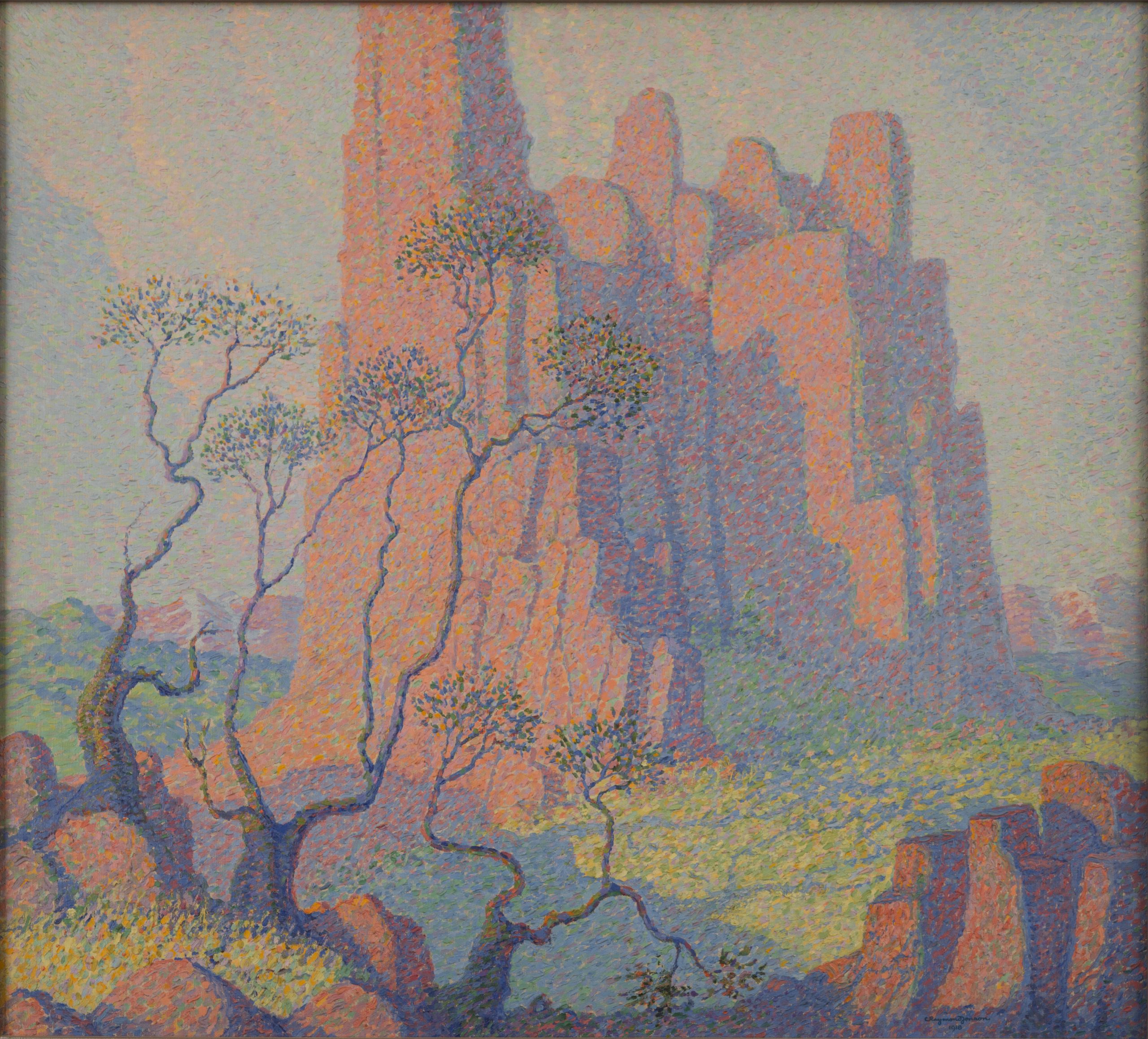
Red Rocks - Colorado, 1918, Oil on canvas, 82.221.0214. 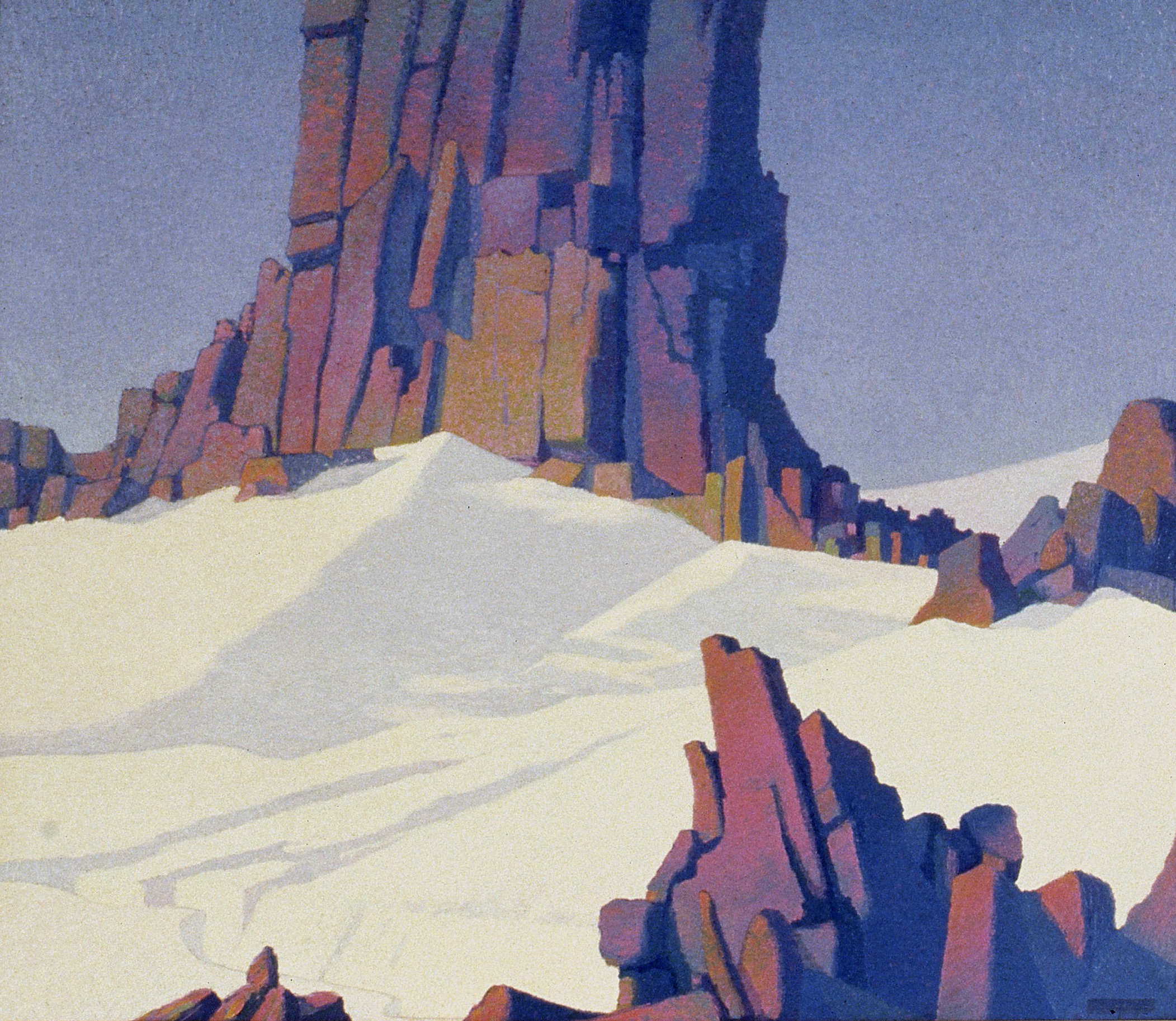
The Power of God, 1918, Oil on board, 82.221.1684. 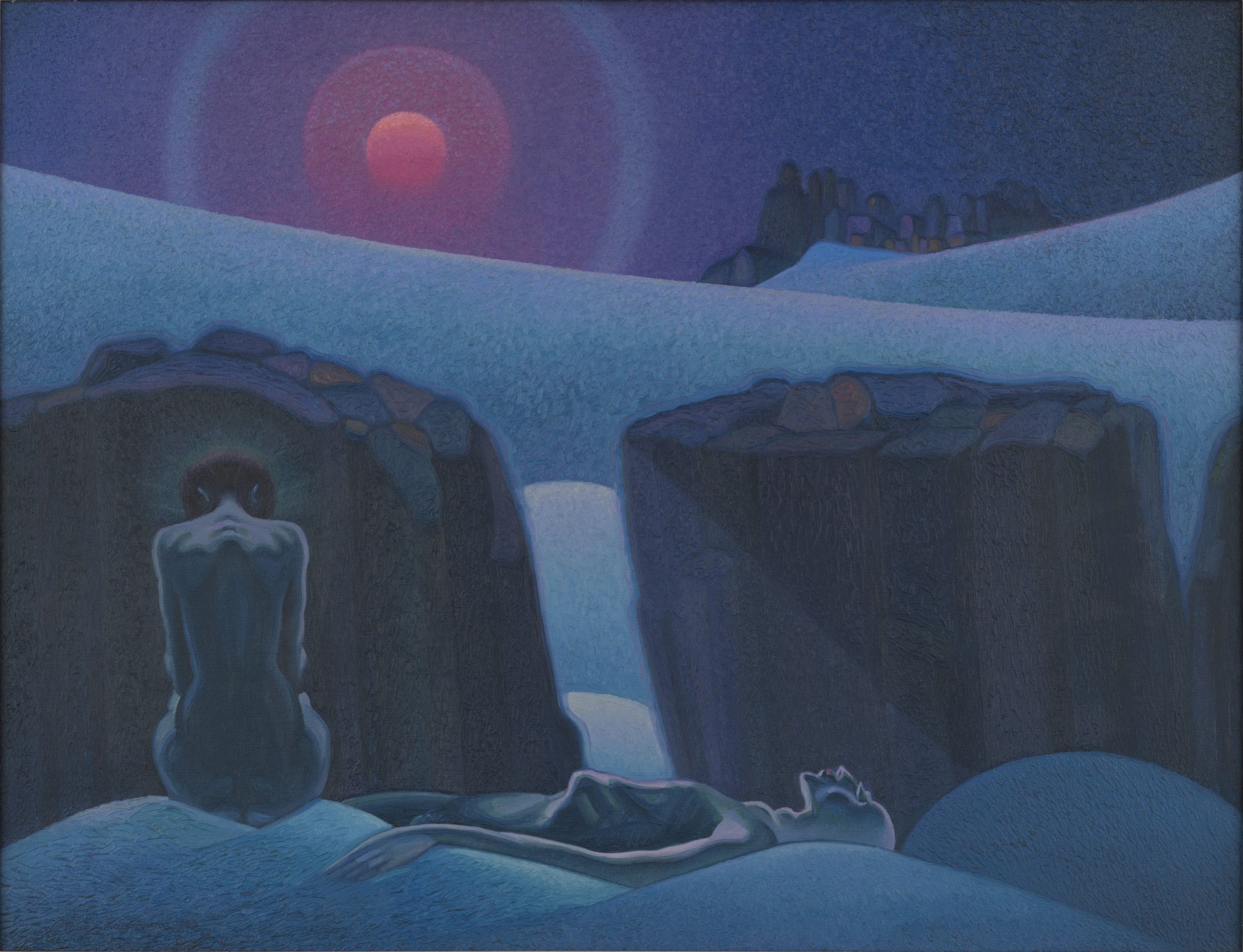
Winter from the Seasons Series, 1922, Oil on canvas, 82.221.1680. 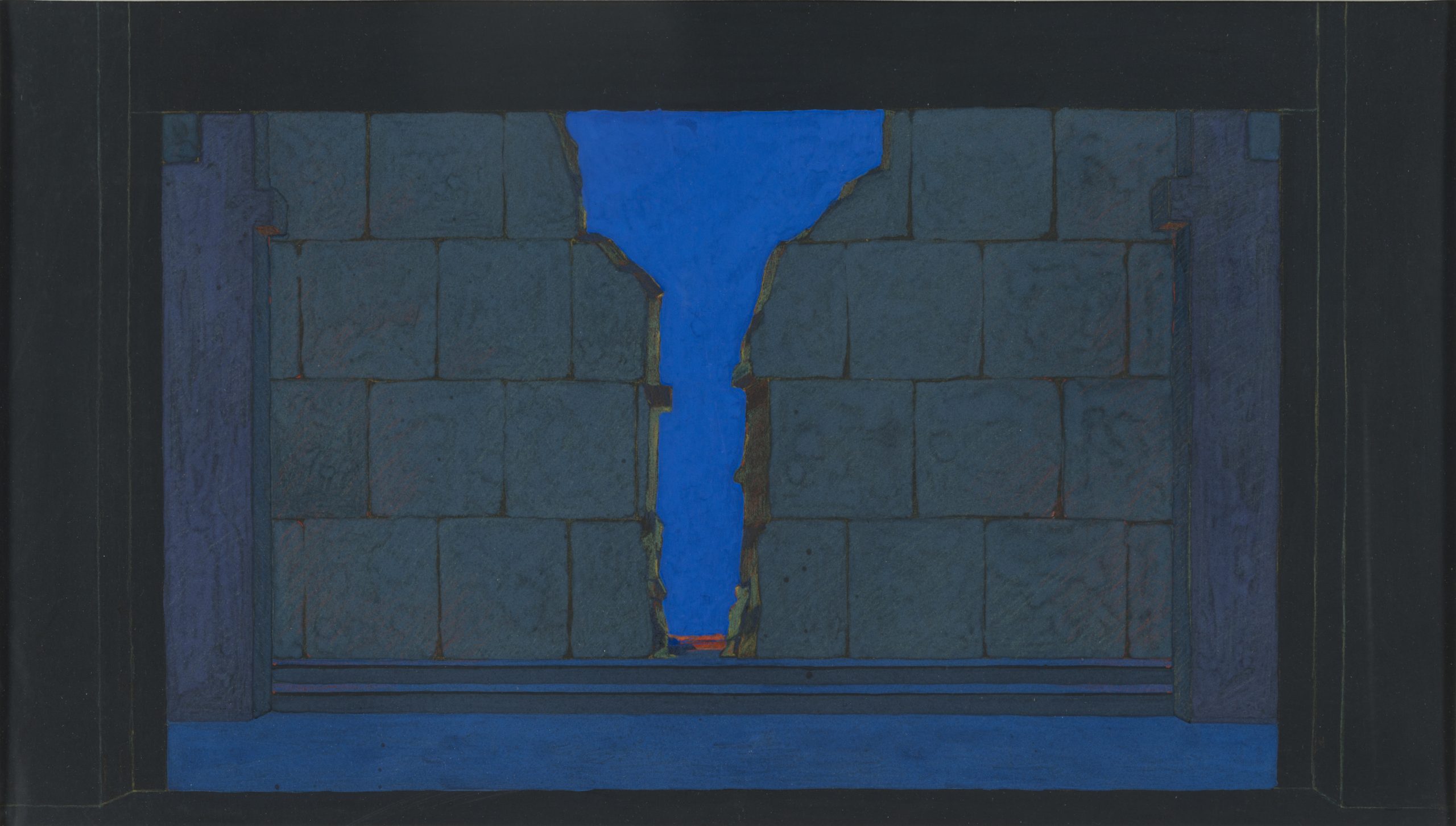
Design for a stage set, The Chicago Little Theatre production of The Trojan Women by Euripides, 1914, 82.221.0264. 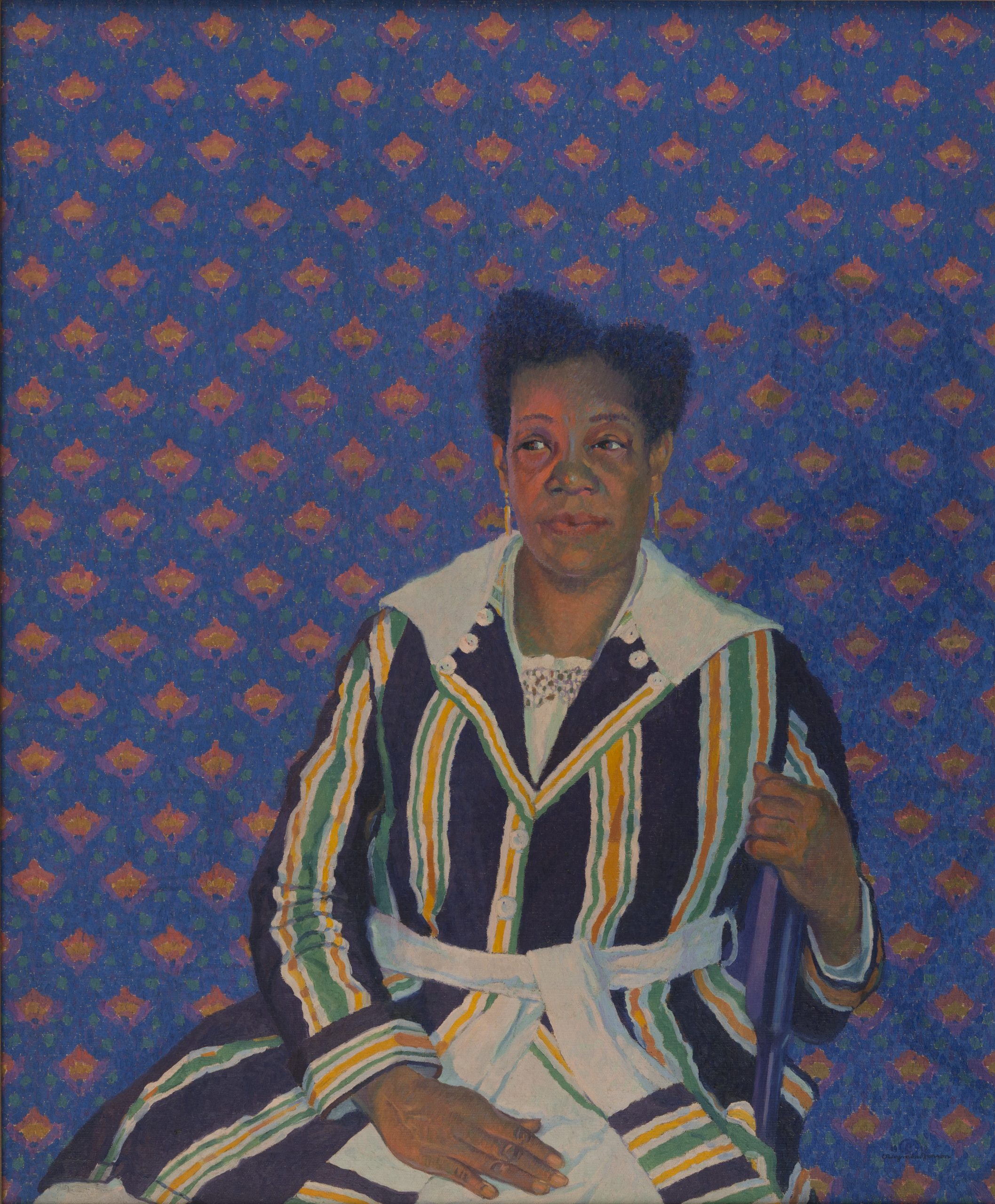
Negro Woman (Mrs. Gates), 1918, Oil on canvas, 82.221.0027. 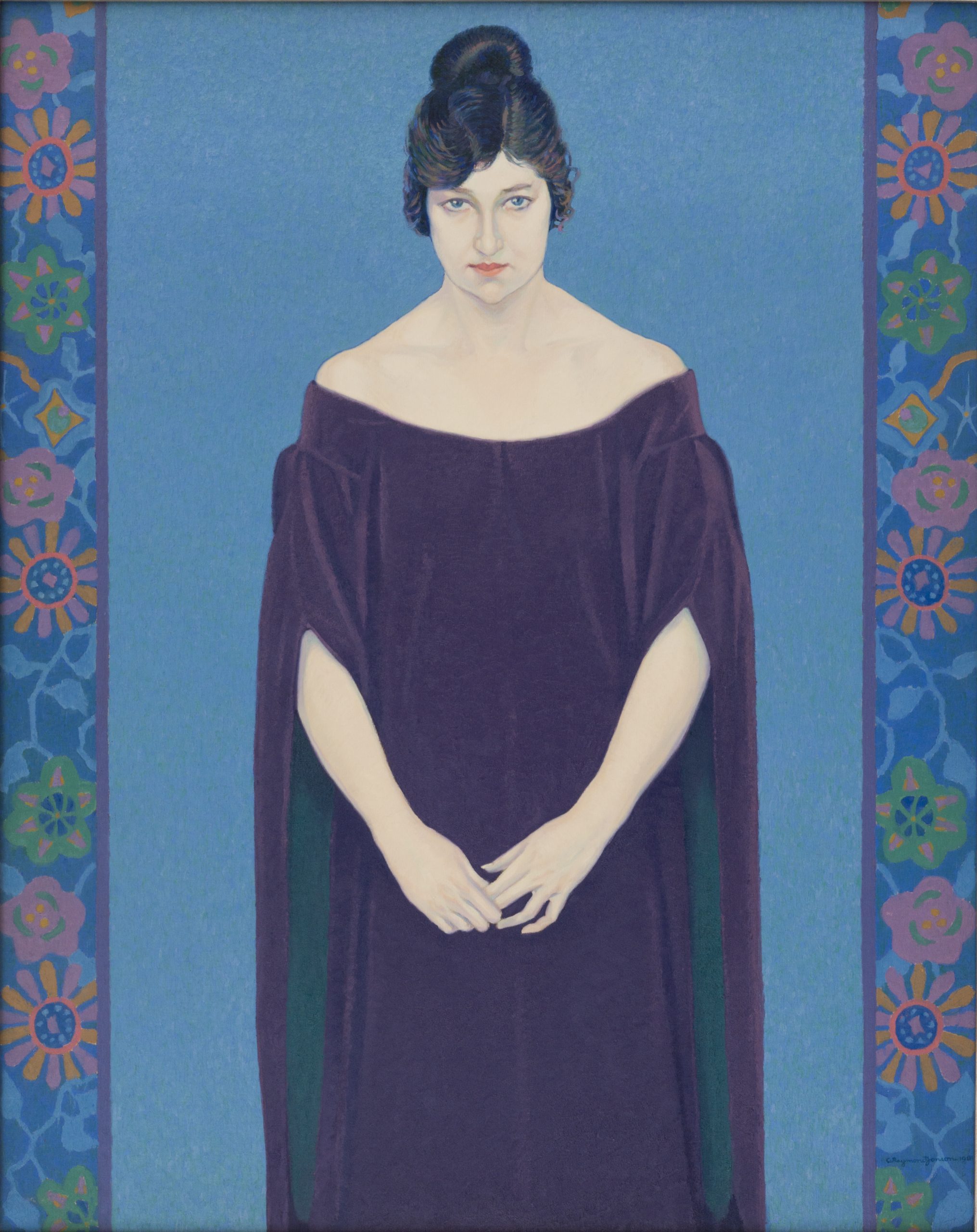
The Lady (Mary Williams), 1918, Oil on canvas, 82.221.0002. 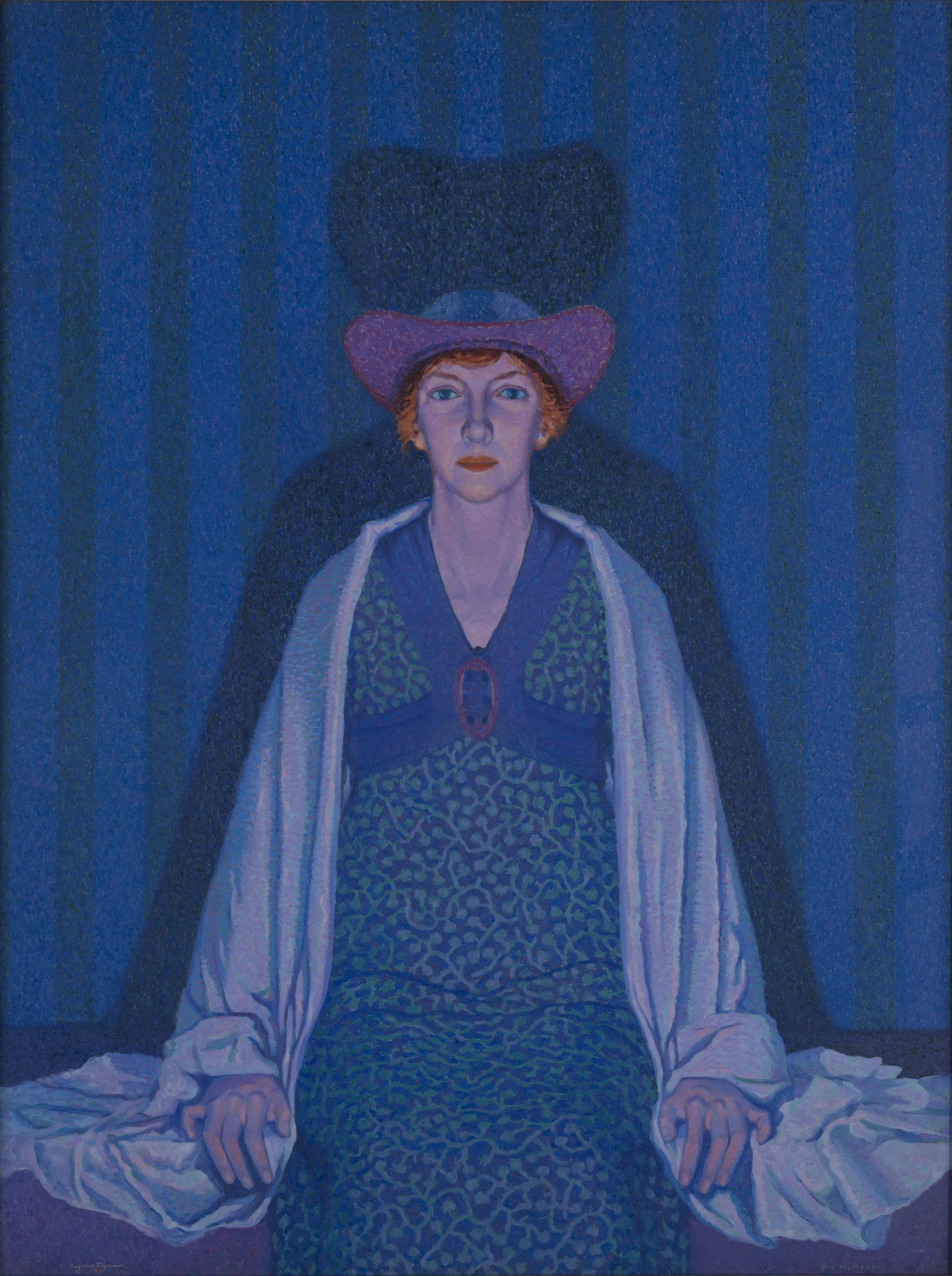
Violet Light (The Artist's Wife, Vera), 1918, Oil on canvas, 82.221.0028. 
The Sailor (Eric Johan Smith), 1919, Oil on canvas, 82.221.0661.

Miriam Kiper - A Characterization, 1919, Oil on canvas, 82.221.0006. 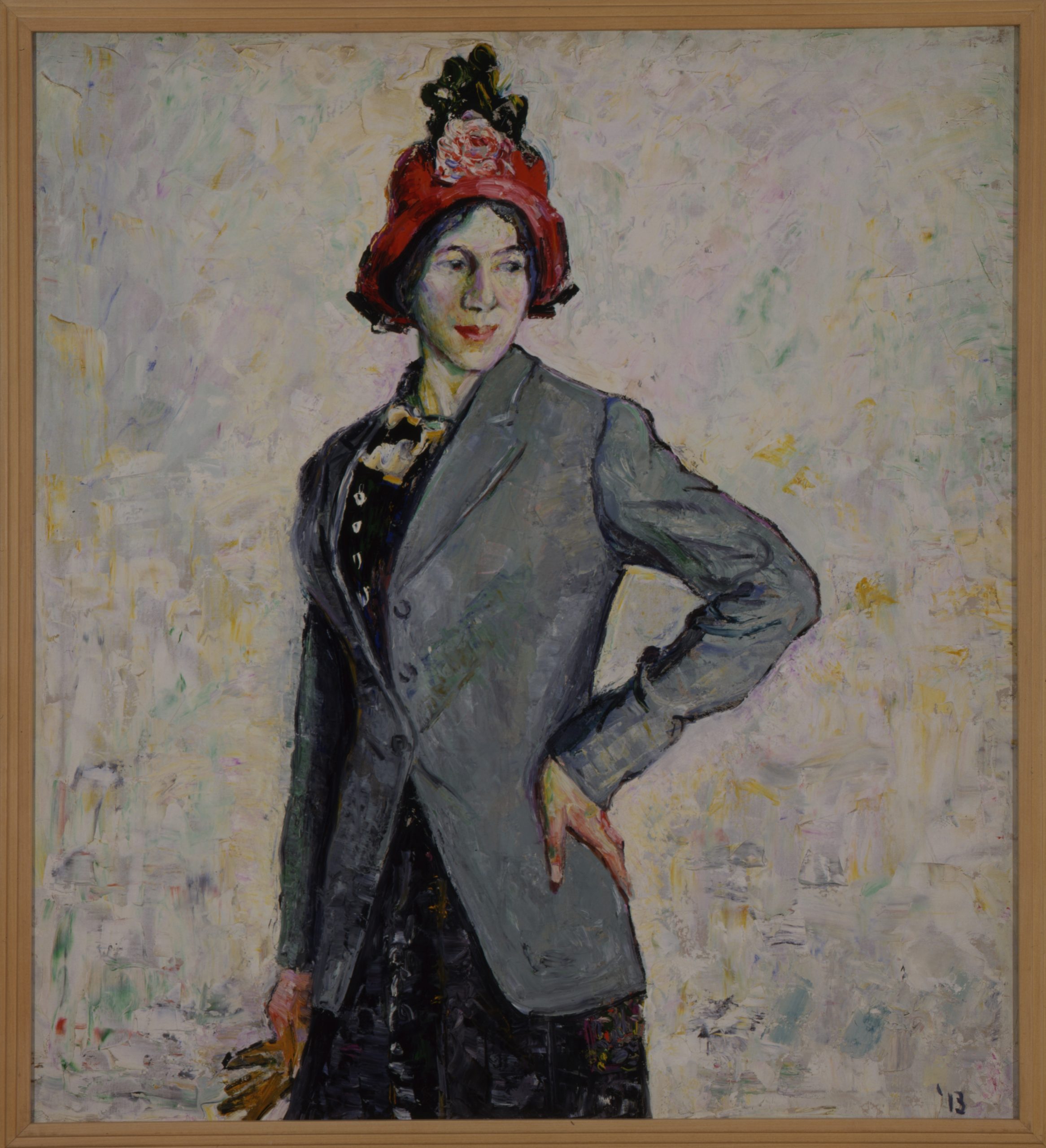
Figure Study - Girl, 1913, Oil on canvas, 82.221.0125. 
My Musical Friend (Floyd Harris), 1914, Oil on canvas, 82.221.0159. 
The Decree, 1918, Oil on canvas, 82.221.0072. 
Field Museum - Chicago, 1912, Oil on canvas, 82.221.0169. 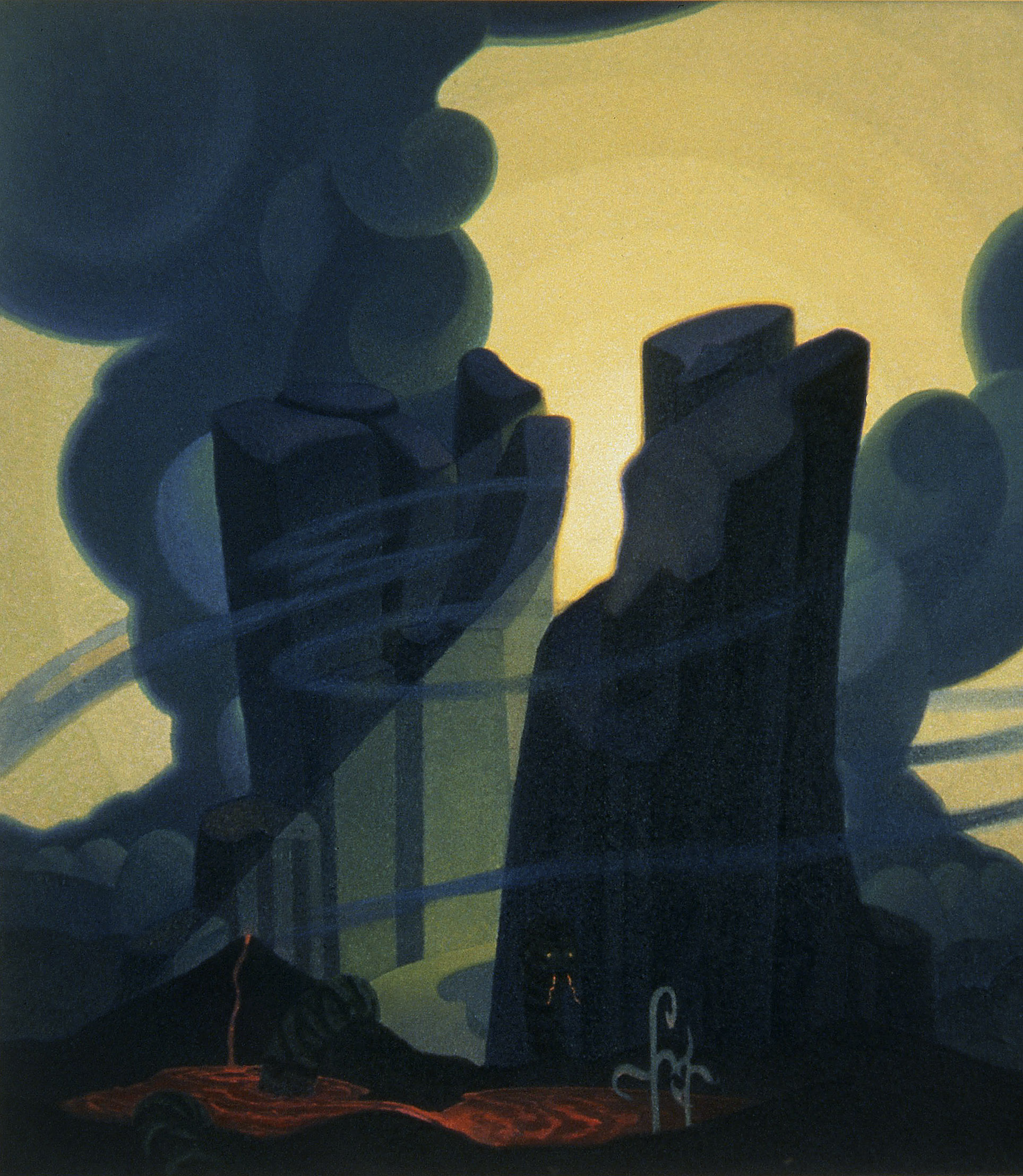
Life, 1921, Oil on canvas, 82.221.0217. 
Still Life Arrangement, 1912, Oil on canvas, 82.221.0356. 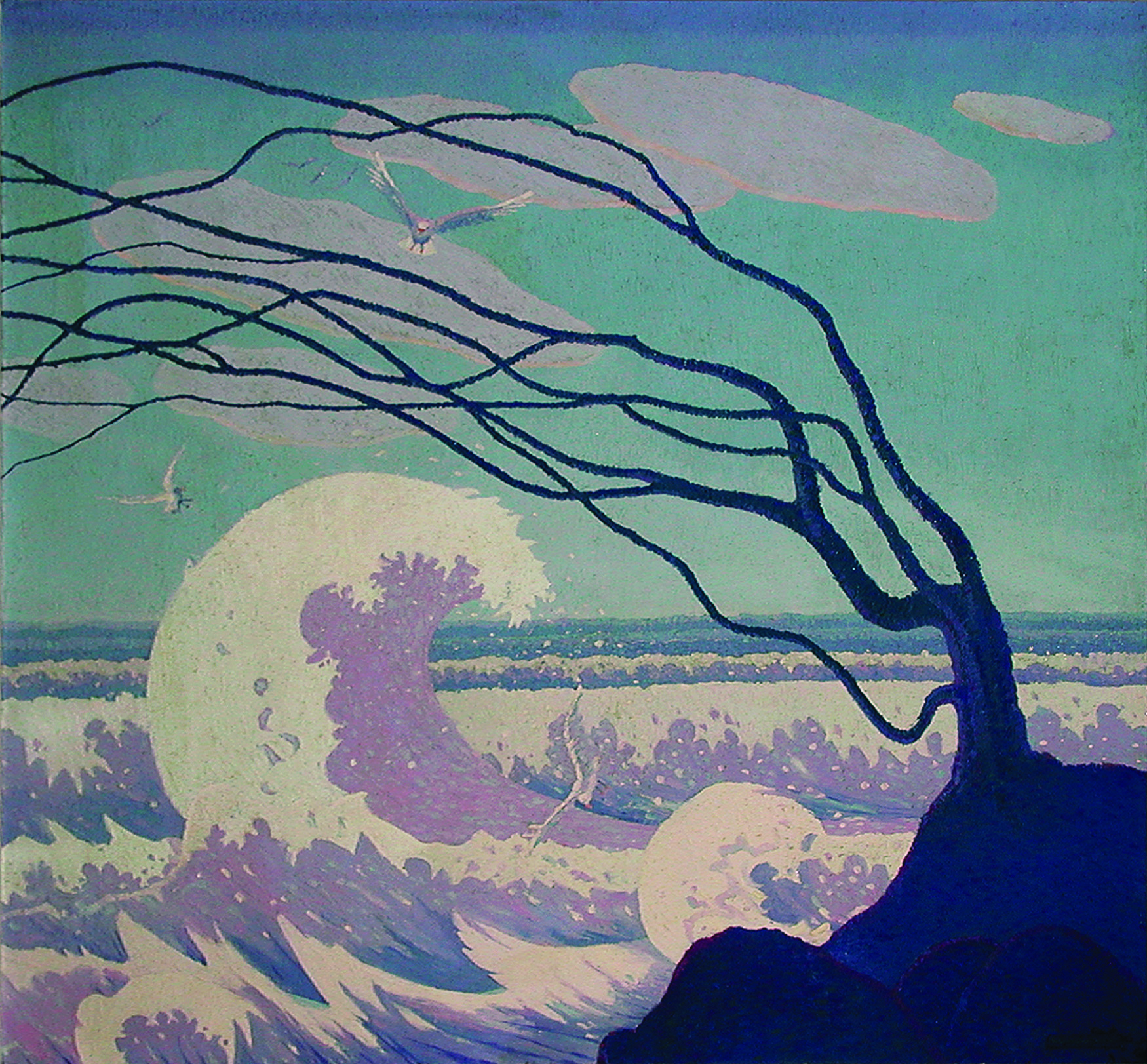
Rhythm of the Wind, 1917, Oil on linen, 2005.5.2.



